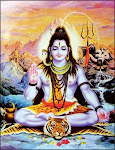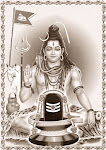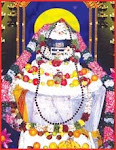


Hinduism
The Six-Headed Aarumugan
K.S. Sivakumaran
The deity in Kataragama (Kathirkamam) is known by many names: Murugan, Kanthan, Kathirkaman, Velone, Skandakumaran, Subramanian, Aarumugan and other names. He is, according to Hindu mythology, the youngest son of Siva and Paarvathi. The elder one is Vinayagar, Ganesh, Pillayaar, Wigneswaran and other names. Murugan’s consorts are Deivayanai and Valliamma.
Murugan has six heads. The number six is known as ‘aaru’ in Tamil. “Aarumugan” means deity with six faces.
To know more about Aarumugan, we have to go back to what scholars have interpreted the attributes of Lord Murugan. One such scholar is the Lankan the late Thangamma Appacutty. One of her articles on Saivaism (a component of Hinduism) is included in a volume recently published in her honour by the All Ceylon Hindu Congress. The article is in Thamil. I shall first try to give the essence of her article on Murugan which was originally written in Thamil.
In her article she writes:
“The six faces face six directions. The religious sect that worships Aarumugan as the primeval God is known as Kaumaram. Some believe that Lord Siva took the form Murugan, the wise deity that goes beyond the Vedas and Puranas. He is an embodiment of compassion to usher in better life to all. The integration of Siva and Parvathi is the philosophy of Muruganism.
An artist’s impression of the entrance of the arch of Kataragama during British era - Courtesy: Ruhunu Jungles by Douglas Raffel (1959)
North Indians call Murugan by the name of Kaarthikeyan. The Pallava monarchs too worshipped Murugan as the primary God. Some kings went by the name Skandakumara. Thamil literature proclaims Murugan as the God of the Thamilians. It was Murugan who taught Thamil to the Muni Agsthiyar. According to Kumarakuruparar, the head of the ancient Thamil Sangam was Murugan.
Sangam Literature and Tholkaapiyam state that Murugan was the deity of Kurinchi region.
Murugan is an embodiment of Pranavam. The vehicle of Murugan the peacock represents the Vedas. The spear in his hand represents Bramma Vidya Shakthi. Murugan’s six faces depict the six Gods like Brahma, Vishnu and others.
The six fire balls emanating from the forehead of Siva took the form of six babies. Six Karthikai ladies brought these babies. Kanthapuranam says that Paarvathi joined all the babies into one body but with six heads.
We have six kinds of sorrows. Soka, moha, matham, growtha, hunger, thirst, jama, mruthyu. Murugan helps us to eradicate these evil desires and lead us to Heaven.”
Readers not familiar with Hinduism or Saivaism might find the almost disconnected description of Lord Murugan a little puzzling. This is natural because you may not be accustomed to the Hindu Mythology or religious significance. It needs a longer essay to write about these things in English.
At least two scholars who wrote well in English on Hinduism were the late Prof. C. Suriyakumaran and presently Sivanandhini Duraisamy, the spouse of the late Ambassador Duraisamy who Sri Lankans.
--------------------------------------------------------------------------------
Sri Sarwartha Sidhi Vinayagar annual festival
Chelvatamby Maniccavasagar
The Hindu temples are intended to instruct men in the art of removing the veil of attachment that covers their hearts. Thus the renowned poet Thiyagarajah cried in the temple of Thirupathi “Remove the veil, O! remove the veil of attachment, the veil of pride and hatred.”
God Ganesha
Further, the temples are meant for the testing of the values of life and to awaken the divinity and humanity inducing man to believe that the physical frame in which he lives is itself the House of God.
In fact, every Hindu temple has a sanctum dedicated to Lord Ganesha. Hindus bow their heads in reverence and make their first offering to Lord Ganesha in all ritualistic worship. Be it pilgrimage, wedding, yoga or housewarming Lord Ganesha is the first deity to be worshipped at the beginning of any ceremony.
Vinayaka, Ganapathy, Vigneswara and Pillaiyas are some of the common appellations given to Lord Ganesha, the God with an elephant head. The bulky body of Lord Ganesha stands for the cosmos in its entirety. The huge pot-belly signifies space containing all things and beings of the world. The trunk represents the sensitive reception of stimuli and cognition. It also signifies the faculty of discrimination.
The broken tusk signifies that he has broken away from ignorance which guides the path of God. The single tusk also denotes single mindedness in action. The other tusk indicates highest knowledge.
His broad ears signify that he hears everything communicated to him. They indicate omniscience. The three eyes of Lord Ganesha represent the moon, the sun and fire which in turn indicate the three phases of creation, sustenance and destruction. The third eye is a symbol of intuitive knowledge. He has four hands which signifies supernatural powers. In one of his left hand he holds an Ankusa or the whip which denotes the destructive phase of cosmos. The spear like weapon also indicates that he uses it to destroy ignorance of his devotees. The third hand holds a dish of Modhaka. This signifies that he distributes the consequences according to the action of the Jeevas. The Modhaka also symbolises the fullness of Brahman.
The fourth hand of Lord Ganesha represents Abhaya. Lord Ganesha uses his little mouse as his vehicle. This shows all beings high and low big and small are the vehicles of the divinity enshrined in the hearts. The little mouse also stands for time. God is beyond time. The mouse is the appropriate symbol of time.
A common form of worship of Lord Ganesha is rapping at the forehead with knuckles and pulling earlobes with crossed hands. This act helps in the purification of the evils.
The Pradakshanam (circumbilating the Deity) and prostration signifies Pranava in action whereas the prostration denotes complete surrender at the feet of the Lord. Smashing coconut shows that the hard nut of ego should be cracked and got rid of before God. Further, the camphor that is burnt in front of Lord Ganesha signifies that we have to burn our illusion or ego with the fire of true knowledge and leave no residue so that we may merge with God.
The Chariot or Ther symbolises human body and the statue of Lord Ganesha is the soul. In front of Chariot are the wooden horses representing in a galloping posture with the reins attached to their mouths held in the hands of the image of Lord Ganesha.
These horses represent human passions while the reins symbolise the necessity of restraining and guiding these passions by the soul. The journey of the Chariot or Ther through the streets is an emblem of the progress of life.
--------------------------------------------------------------------------------
Rajarajeswari Amman Festival today
The annual festival of the Sri Rajaraajeswari Amman temple of Mattakkuliya, Crow Island, Colombo will begin today, with the flag hoisting ceremony. The festival will continue for seven days with the Chariot festival on August 25 and the water cutting ceremony on August 26. Elaborate arrangements have been made by the temple management to have religious speeches, and cultural events during the festival days.
dailynews.lk












